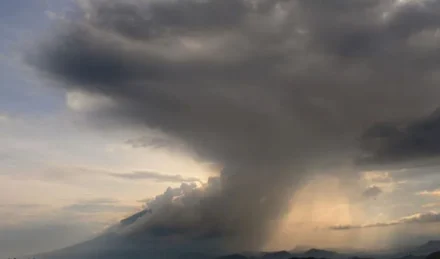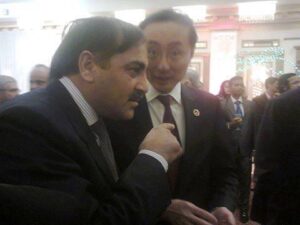By Qamar Bashir
The meeting between President Donald Trump and Russian President Vladimir Putin in Anchorage, Alaska, set the stage for a whirlwind of diplomatic maneuvering among all stakeholders in the Russia–Ukraine conflict. More than thirty European nations that have supported Ukraine against Russian aggression were forced to reassess their strategies in light of the unexpected opening that emerged from the summit. The encounter did not yield a ceasefire or an immediate breakthrough, but it opened a fragile doorway toward a potential peace settlement, one that has already triggered frantic consultations across capitals and drawn in leaders who fear being sidelined in the process.
At the heart of the Alaska talks was a dramatic pivot by Trump, who abandoned the initial idea of negotiating a temporary ceasefire and instead pressed for a comprehensive peace deal. Putin’s proposal, which Trump appeared willing to explore, was stark and uncompromising. It required Ukraine to cede Donetsk and Luhansk in their entirety, recognizing them as Russian-controlled regions, while Russia would agree to withdraw from small pockets it still occupies in the northern oblasts of Kharkiv and Sumy. The deal also demanded that Ukraine renounce NATO membership permanently, accept international recognition of Russian sovereignty over Crimea, and agree to lift certain sanctions. Further conditions included granting official status to the Russian language and the Russian Orthodox Church within Ukraine. Perhaps most controversially, Putin made it clear that a ceasefire would not precede the agreement but would only take effect after its implementation, making Ukrainian concessions a precondition to ending the war.
This land-for-peace proposal was quickly labeled unacceptable in Kyiv, yet Trump described the discussions as “productive” and even suggested the two sides were “close to a deal.” He left the impression that if Zelensky accepted the plan, Trump would claim credit for ending the war, while still insisting Ukraine must make the final choice. Trump’s envoy later revealed that Putin had agreed in principle to allow the United States and Europe to extend NATO-style security protections to Ukraine. This appeared to be a potential breakthrough, though it was far from clear whether such guarantees would amount to anything as robust as Article 5 of the NATO treaty, which treats an attack on one member as an attack on all. The ambiguity was deliberate: Trump sought to preserve flexibility, while Putin insisted that border changes be recognized internationally, a condition flatly rejected by Kyiv and its allies.
The immediate reaction from Europe was alarm. France’s Emmanuel Macron, Germany’s Friedrich Merz, the European Commission’s Ursula von der Leyen, and the UK’s Keir Starmer, among others, pressed urgently to be included in the next round of talks. They feared that a one-on-one Trump–Zelensky meeting in Washington could result in Zelensky being humiliated or pressured into territorial concessions under duress. The White House initially resisted but eventually relented under mounting pressure, confirming that the meeting in Washington would now be a multilateral summit involving European leaders alongside Trump and Zelensky. Europe’s stance was clear: there could be no peace imposed without Ukraine’s consent, no recognition of territorial conquest, and no settlement without a verifiable ceasefire as a starting point.
For Europe, the stakes go beyond solidarity with Ukraine. The concern is existential. If Ukraine is forced into surrender, Russia would feel emboldened to threaten Poland, the Baltic states, and perhaps even Central Europe. This explains why European leaders have demanded not only robust NATO-style guarantees for Ukraine but also assurances that Russia will not use any peace settlement as a staging ground for further expansion. They know that if the United States withdraws its military and financial support under Trump’s threats, the burden will shift onto Europe alone. That prospect is politically and financially untenable, and so the Europeans are determined to anchor themselves firmly in the negotiations.
The human cost of the conflict adds urgency. Millions of Ukrainians have been displaced, thousands of lives lost, and entire cities reduced to rubble. The war has devastated supply chains for energy, grain, and minerals, driving up food and oil prices, fueling inflation, and worsening hardship across the globe. Developing nations in Africa, Asia, and Latin America have been particularly hard hit, with rising bread prices triggering political unrest and shortages of fuel crippling fragile economies. Sanctions on countries trading with Russia have further compounded the crisis, choking commerce and punishing populations far from the battlefield. A resolution, however imperfect, could lift these burdens, stabilize markets, and release billions of dollars currently being spent on weapons back into reconstruction, humanitarian relief, and development.
Trump himself framed the Alaska meeting as an opening rather than an outcome, claiming progress on “many points” but offering few specifics. His tone was optimistic yet evasive, carefully avoiding commitments that might limit his room to maneuver. Putin, meanwhile, presented his maximalist plan as if it were already the only acceptable solution. Zelensky, speaking from Kyiv, rejected the idea of trading land for peace and emphasized that Ukraine’s sovereignty and territorial integrity were not negotiable. His message was clear: no deal could be reached if it forced Ukraine to concede regions without the consent of its people.
In this tension lies the fragility of the moment. Trump sees an opportunity to present himself as a peacemaker and deal-maker, potentially reshaping his image at home and abroad. Putin sees a chance to lock in gains achieved by force, turning temporary occupation into permanent sovereignty. Zelensky faces the impossible task of defending his nation’s survival while resisting pressure from allies who may be tiring of war. Europe, caught between solidarity with Ukraine and fear of abandonment by Washington, must walk a fine line between supporting Kyiv and securing guarantees for its own security.
The way forward demands wisdom. Ceasefire must come first, for as long as bombs fall, peace talks are built on sand. Territorial disputes could be managed through international mechanisms such as supervised referenda or peacekeeping deployments, ensuring decisions are not taken under the shadow of guns. Robust, legally binding security guarantees must replace vague assurances, ensuring Ukraine cannot again be left exposed to invasion. Sanctions could be lifted in phases, tied directly to verified steps by Russia toward compliance, maintaining leverage while rewarding genuine progress. Above all, leaders must recognize that ego and pride cannot outweigh the suffering of millions.
History rarely offers golden opportunities, and when they appear, they must be grasped with courage. The Alaska summit has opened such a door, but it will slam shut if mistrust, humiliation, or unilateralism dominates the talks. If this moment is squandered, the war will not only continue but risk spreading across Europe, drawing in NATO and igniting catastrophe on a continental scale. Yet if leaders embrace compromise, soften hardened positions, and commit to saving lives rather than scoring victories, the world may remember Anchorage not as another failed summit but as the first step toward peace.
War is cruel, and its wounds are long-lasting, but peace—even fragile peace—is always worth the risk. The lives saved, the economies revived, and the trust restored will outshine any battlefield victory. The world now watches as Trump, Putin, Zelensky, and Europe decide whether to rise to the occasion or condemn millions to further destruction. The choice is theirs, and history will judge them accordingly.
About Writer:Press Secretary to the President (Rtd)
Former Press Minister, Embassy of Pakistan to France
Former Press Attache to Malaysia
Former MD, SRBC | Macomb, Michigan, USA




